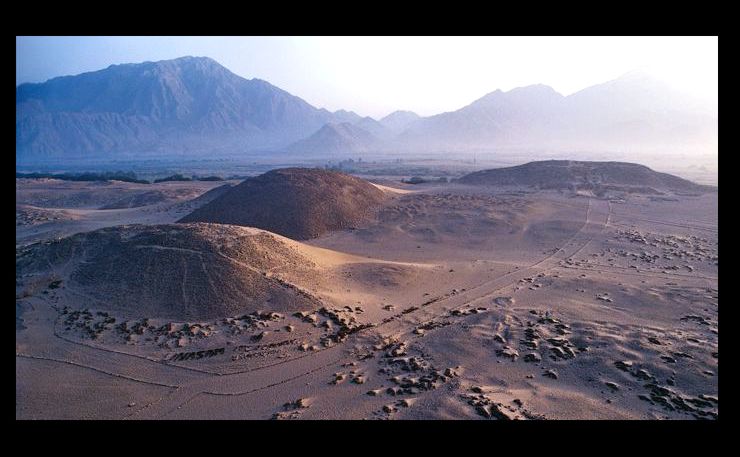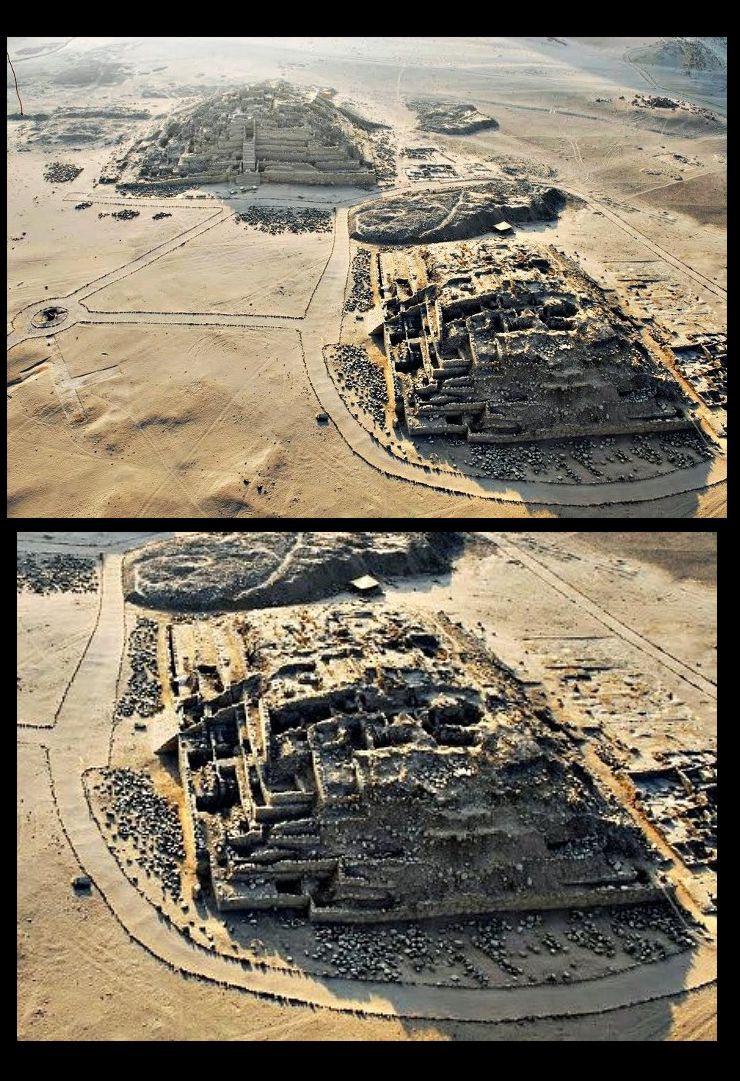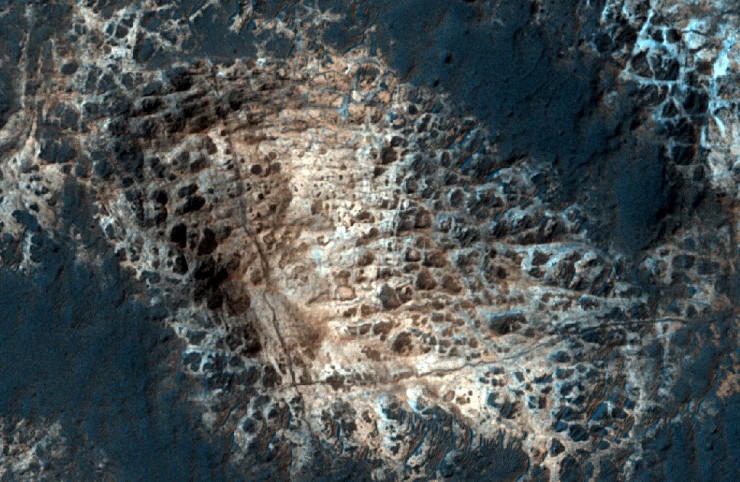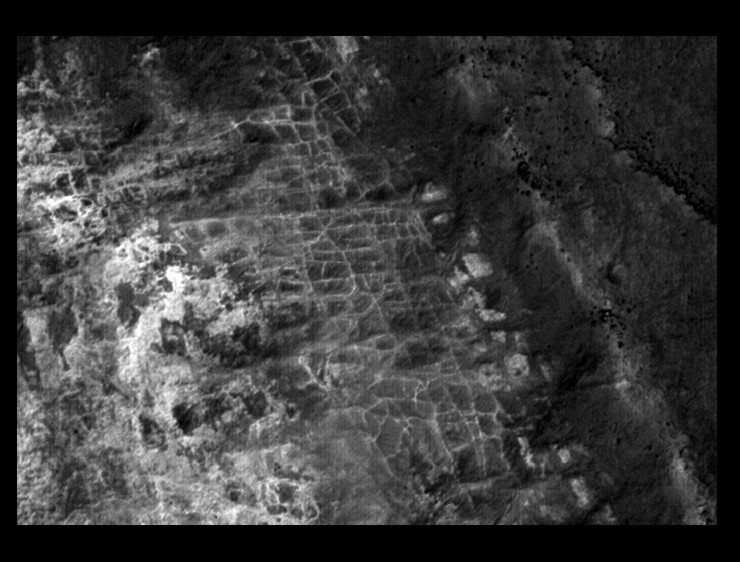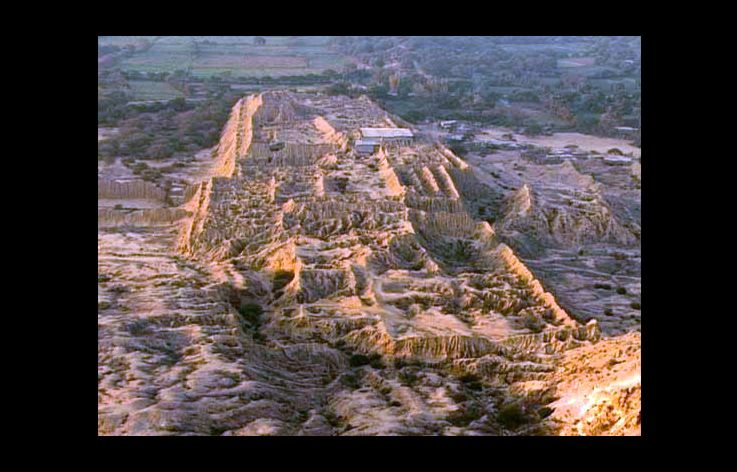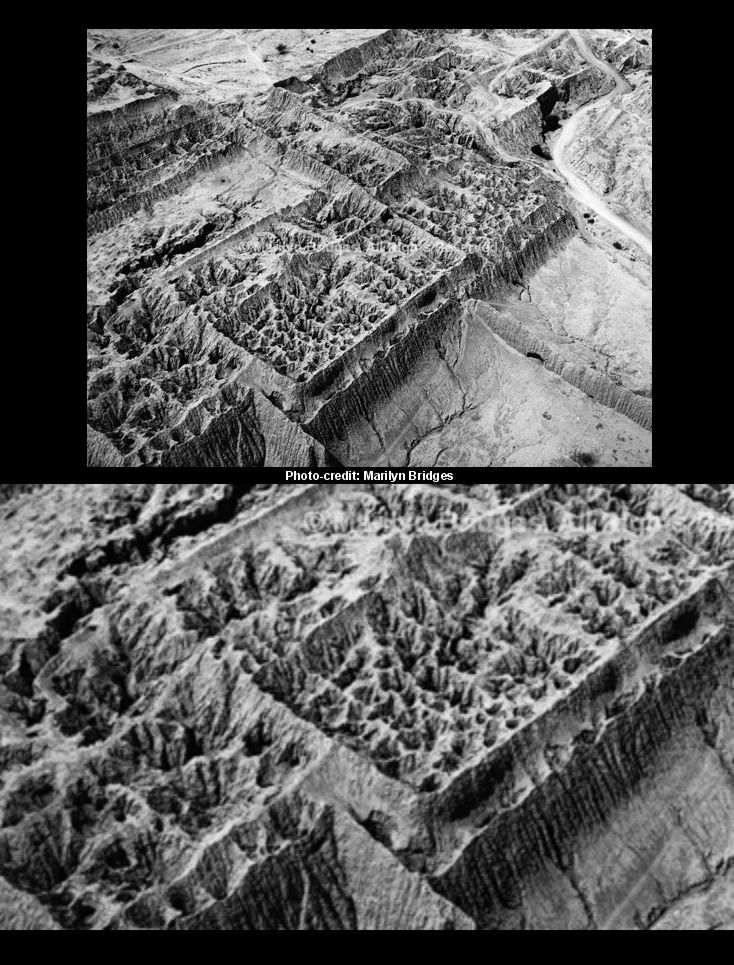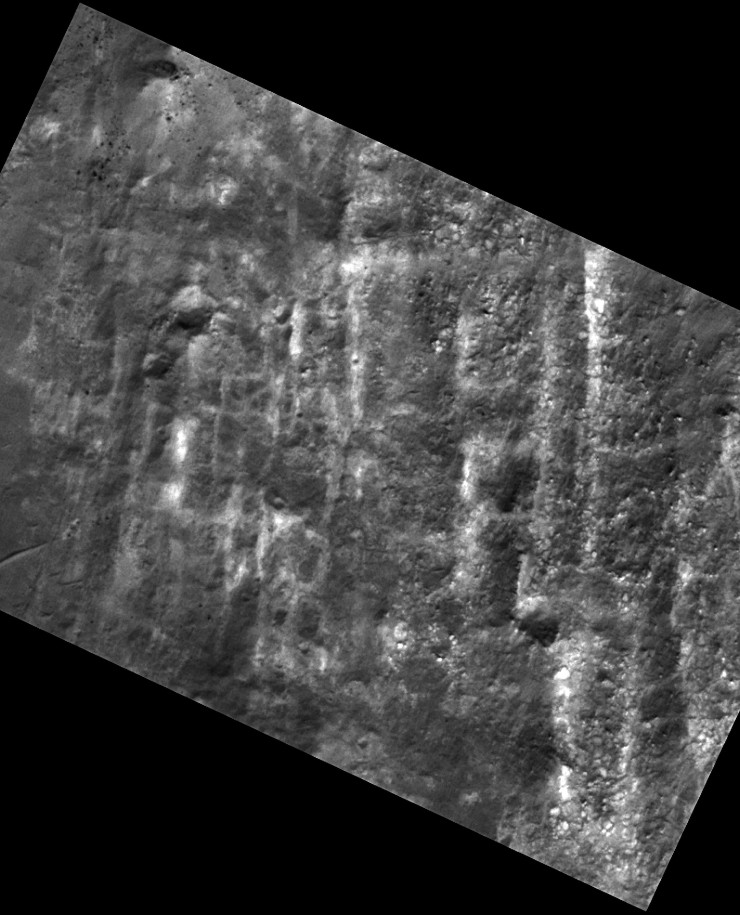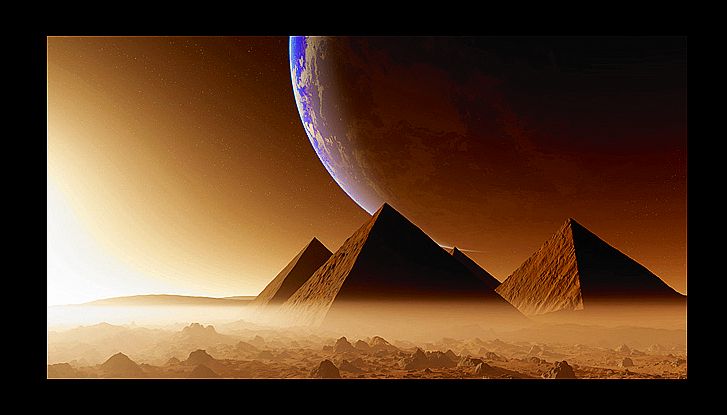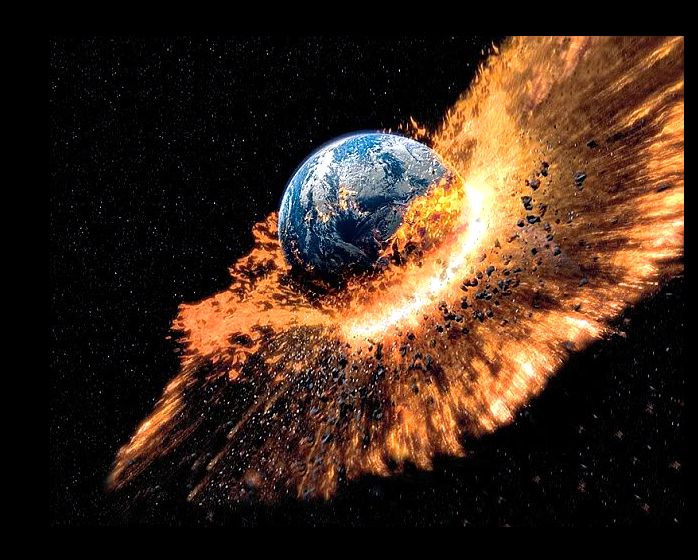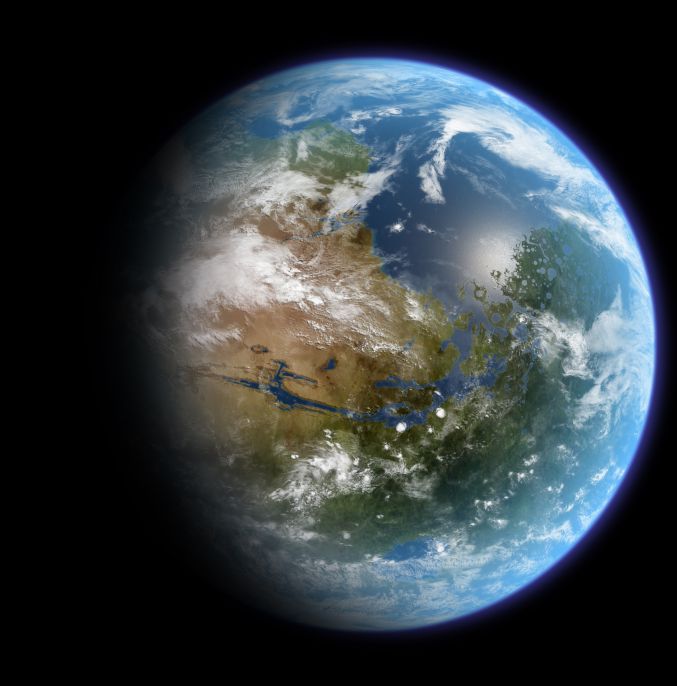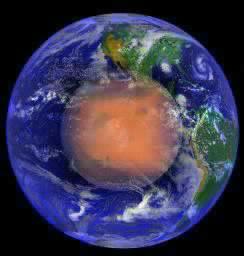
Cydonia Quest C "Fossil" Arcologies in Ariadnes Colles? C Part Four
Comparing the Mounds of Ariadnes Colles with the Pyramids of Peru
In Part One of this series the massive grids embedded in the mounds of Ariadnes Colles were compared with much smaller geological grids on Earth, (refer back to µµµ).
In this part of the series these archaeological looking grids will be compared with earthly analogues that are both massive and artificial. This part will then end with a discussion of how the mounds of Ariadnes Colles might relate to the possibly artificial mounds at Cydonia.
The hypothesis that we have been exploring for the gridded mounds of Ariadnes Colles is that millions of years ago they were massive and complex habitats (arcologies). They were then crushed under deep sediments - and "fossilised" as the sediments turned to soft rock.
Most of the Earth's massive pyramids are not habitats, have simple structures, and so cannot be compared directly with the possible arcologies of Mars. However, the pyramids of Peru were built with complex grids of retaining walls, with the spaces between them infilled with earth. Some of these pyramids were also inhabited structures. This structural complexity means they can be usefully employed in comparisons with Mars "arcologies". C The Pyramids at Caral in Peru
The picture below shows how the pyramids at Caral look before archaeologists excavate and renovate them. In this undisturbed state these mounds of sand choked rubble look very natural.
When the Caral pyramids are excavated of overlying rubble and sand this is similar in effect to the soft rock being eroded from around the grid structures in Ariadnes Colles.
The next picture shows Caral pyramids that have been excavated. Ground level photographs reveal that some of the retaining walls have been repaired by the archaeologists. The geometry of these retaining walls is therefore more striking than nature left them with. However, it is evident that slumping in the pyramids has resulted in many of the walls being twisted out of shape. Even though the Caral pyramids haven't been buried under hundreds of feet of Martian sediment, it can be seen that big structures soon begin to mutate away from their pristine geometry.
One thing that can be seen in the previous image is many room-like spaces that are a match for those seen in many of the Ariadnes mounds on Mars.
The structures of the massive "fossilised" arcologies proposed for Ariadnes Colles are more collapsed and distorted than those at Caral in Peru. However, it is extremely interesting to compare the excavated Caral pyramids with some of the grid structures in the Ariadnes mounds below. (These have previously been covered in parts one to three, where there are many more examples). c
c
C The Pyramids at Tucume in Peru
The huge pyramid platforms at Tucume were the abode of a priestly ruling class, before the populace lost faith in the gods.
The Caral pyramids have retaining walls of stone with earth infill. At Tucume the retaining walls are made out of mud bricks using the same earth as the infill. This means that the grids of the Tucume pyramids have a much more natural look, because the retaining walls erode at a similar rate to the earth infilling. The next two images are of some of the Tucume pyramid platforms.
It can be seen that although the major features of the structures have maintained their straight lines, the geometry of minor interior structure has eroded towards more natural forms.
The appearance of the man-made Tucume pyramids makes a good comparison with that of the Ariadnes "D", "E"" and "F" mounds that were examined in Part Three, (see µµµ). The following image shows the similar looking right angled geometry of the worn side of Ariadnes "E" mound on Mars. c
C From the above visual comparisons we can conclude that there are strong similarities between the gridded hills of Ariadnes Colles and the structurally complex pyramids of Caral and Tucume. We should therefore remain open minded to the possibility that Ariadnes Colles was once home to an extraterrestrial colony living in massive arcologies. C How do the Ariadnes "Arcologies" Relate to those at Cydonia ?
If we were to discover for sure that there are the ruins of an ancient civilisation on Mars, then it is likely that the "arcologies" of Ariadnes Colles are older than those at Cydonia.
Although at times the Cydonia anomalies may have been buried by wind blown sediments, this has not solidified around them as rock - as is the case for the "arcology ruins" at Ariadnes Colles. It is highly unlikely that the facial features on an artificial Cydonia "Face" would have survived being encased in rock (µµµ). This suggests a more recent origin for any Cydonia ruins.
There is an interesting question to answer in regard to the artificiality hypothesis for the anomalies at Ariadnes Colles. Were the "fossil ruins" buried slowly by drifting sediments - or buried all at once in a sudden cataclysm ?
The sensing equipment on the space probes orbiting Mars tell us that the rock of Ariadnes Colles is made up of water rich minerals. This fits in with the gathering evidence that Mars was very wet for at least its first two to three billion years. There is increasing confidence that the planet once had an ocean, seas, lakes and rivers for a very long time.
Could the anomalies at Ariadnes Colles have been buried by ocean floor mud when some ancient disaster sent Mars tumbling, resulting in the ocean washing over the land ?
There are many scenarios for how Mars could have been subject to this hypothetical doomsday. The one favoured by the Enterprise Mission is the Exploded Planet Hypothesis that was resurrected by the late Dr. Tom Van Flandern.
In 1801 the dwarf planet Ceres was discovered between the orbits of Mars and Jupiter. This was followed by the discovery of the dwarf planet Pallas in the same general orbit in 1802 by Heinrich Olbers. Olbers suggested that the two bodies were remnants of a larger planet that had been destroyed. He then successfully predicted that many more objects would be discovered in what we now call the Asteroid Belt. Olbers called his former - and now disintegrated - planet Phaeton. Today most astronomers believe that asteroids, comets, dwarf planets and Kuiper Belt objects are just the left-over stuff from the chaotic formation of the Solar System, when proto-planets were formed and destroyed in quick succession through collisions.
During the later years of the cold war Van Flandern was chief of celestial mechanics at the US Naval Observatory. Part of his duties was plotting and predicting the courses of the debris from tests by the Soviets of anti-satellite weapons. The pattern of dispersal from these explosions inspired him to re-evaluate the old Exploded Planet Hypothesis.
Van Flandern's speculative scenario was that the lost planet was only destroyed 65 million years ago. In the scenario the destruction led to the creation of many asteroids and long period comets - with most of the material being blasted into the Sun, the outer Solar System, or straight out into interstellar space altogether.
Due to the geologically recent destruction of the lost planet Van Flandern predicted that many asteroids would be little more than rubble piles. There wouldn't have been enough time for gravity to compress the rubble into solid rock. He also predicted that many asteroids would have their own mini-moons due to the dynamics of the recent explosion. Further predictions were that long period comets would be drier than expected, and that many asteroids would be wetter and more comet-like than expected. (This was because they had come from the same exploded body). These predictions have all proven to be true - but space scientists have tried to find mundane explanations for their causation.
A short paper by Van Flandern about the Exploding Planet Hypothesis can be read by clicking the following "stargate" µµµ. An Enterprise Mission paper evaluating the evidence for Mars once being the moon of an exploded planet can be found here µµµ.
The relevance of Van Flandern's ideas to this discussion is that he proposed that Mars was once the moon of this destroyed planet. (This suggests that Ceres, Vesta and Pallas were also smaller moons too). Mars would, in this scenario, have had an extreme shaking from the destruction of its parent planet - and this would provide a mechanism for the burying of the hypothetical arcologies at Ariadnes Colles.
There is some weak support for the idea that a catastrophe affected the inner Solar System 65 million years ago. Scientists who have run computer simulations of the history of the inner Solar System find that there was some kind of abrupt disruption to the orbital dynamics of the inner planets at that time.
This was also the time when the Yucatan was struck by a huge asteroid that killed off the dinosaurs. The theory that the Earth was hit by an asteroid followed from the discovery of a layer of asteroid derived iridium near the geological boundary - the KT boundary - where Earth suffered its mass extinction.
However, this iridium layer seems to have been laid down 300,000 years after the Yucatan asteroid impact. This suggests a second killer asteroid impact somewhere else on Earth in the same geological time frame. It is remarkable that two very rare impacts occurred so close together - and there may have been more than two.
Did an exploding planet fill the inner Solar System with killer debris in dangerous orbits - dooming the dinosaurs to extinction?
Some scientists think that the Shiva Formation off the coast of India is the crater of the second "dinosaur killing" asteroid impact. (Click the following "stargate" to read an article about the Shiva impact theory µµµ).
Under the current theories for Mars 65 million years ago is too recent for the planet to have still had an ocean. This undermines the scenario that Ariadnes Colles was buried under tsunami deposited mud. One possibility is that we have it completely wrong - and that Mars was still naturally wet up until some disaster in the inner Solar System as recently as 65 million years in the past.
A second possibility is that not only was Mars colonised by an advanced civilisation, but that they terraformed the planet to bring back its seas and atmosphere. (See the following to read how Mars might be made more Earth-like, µµµ). If we were to terraform Mars, then it would look something like the image below.
Today there is an incredible amount of free water locked up in Mars' crust, according to information gathered by the sensing equipment on Mars probes. There is at least enough to cover the whole surface of Mars in fifteen feet of water. So a third possibility is that any catastrophe that sent Mars tumbling caused such stresses in the crust that liquefaction occurred. Water and liquid mud would just simply gush out of the ground and flood over everything.
Near the beginning of this discussion it was suggested that the possible ruins at Cydonia did not appear to have been affected by the disaster scenario proposed for Ariadnes Colles. If both sets of anomalies really are artificial, then Ariadnes Colles is probably pre-apocalypse - and Cydonia post-apocalypse. A scenario is therefore possible were each set of ruins was built millions of years apart, by entirely different civilisations, and by entirely different species.
Viewing notes: Some images on this page are quite large. Readers are advised to view these images in "full screen" mode - press the F11 key to enter "full screen" and then F11 again to return to the normal browser view.
Important details in images can be lost if viewed at too low a zoom level. Many readers will benefit by increasing their browser "zoom" by an increment or two - hold down the control key (Ctrl) and press the plus key (+). To return to standard zoom hold down the control key and press the minus key (-).
The three dimensional aspects of these images usually show up best when viewed in low lighting conditions.
c
µ Back to Part 1 µ Back to Part 2 µ Back to Part 3 µ Back to the Mars Page µ Back to Cydonia Quest Main Page C C
|
